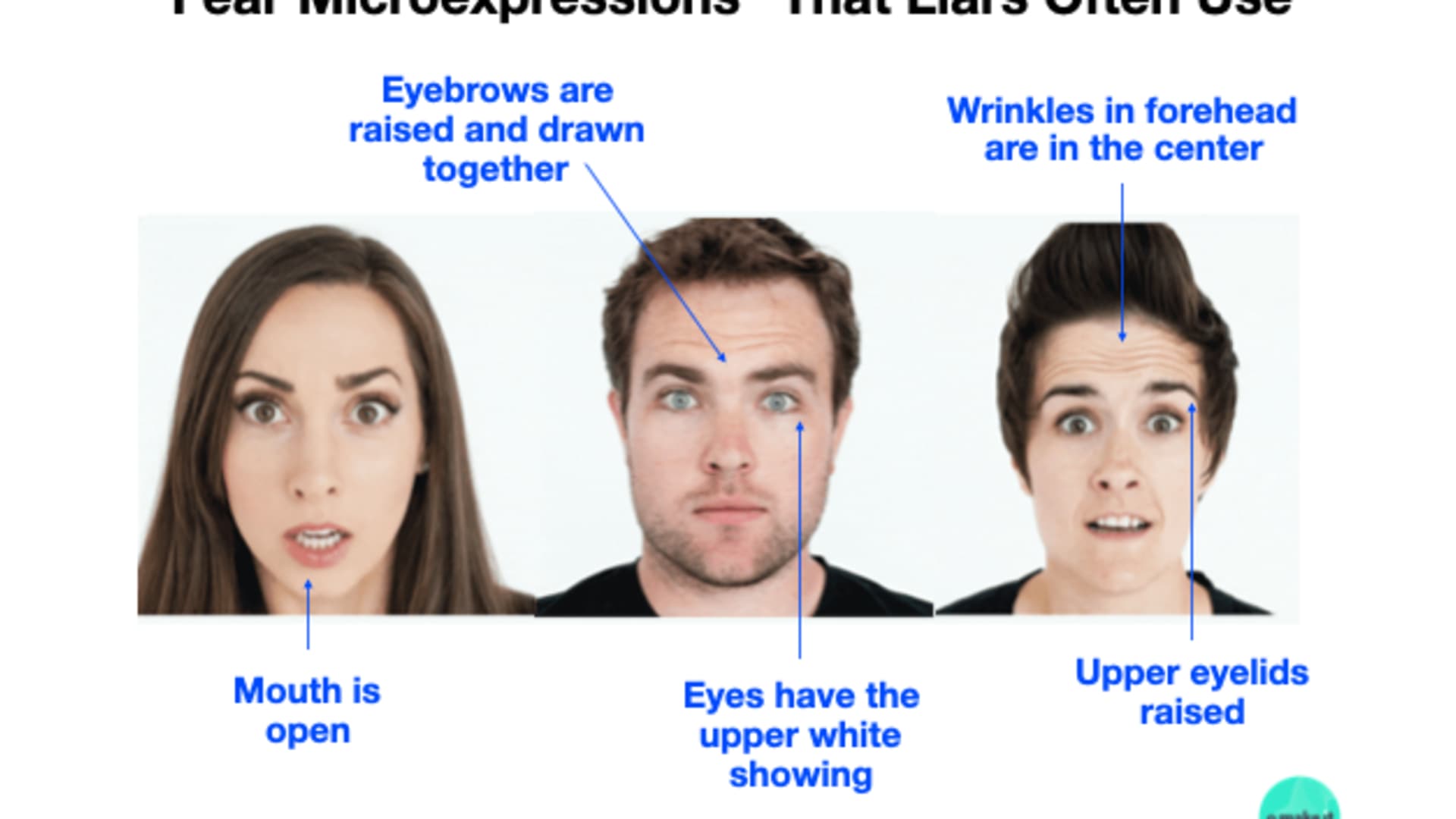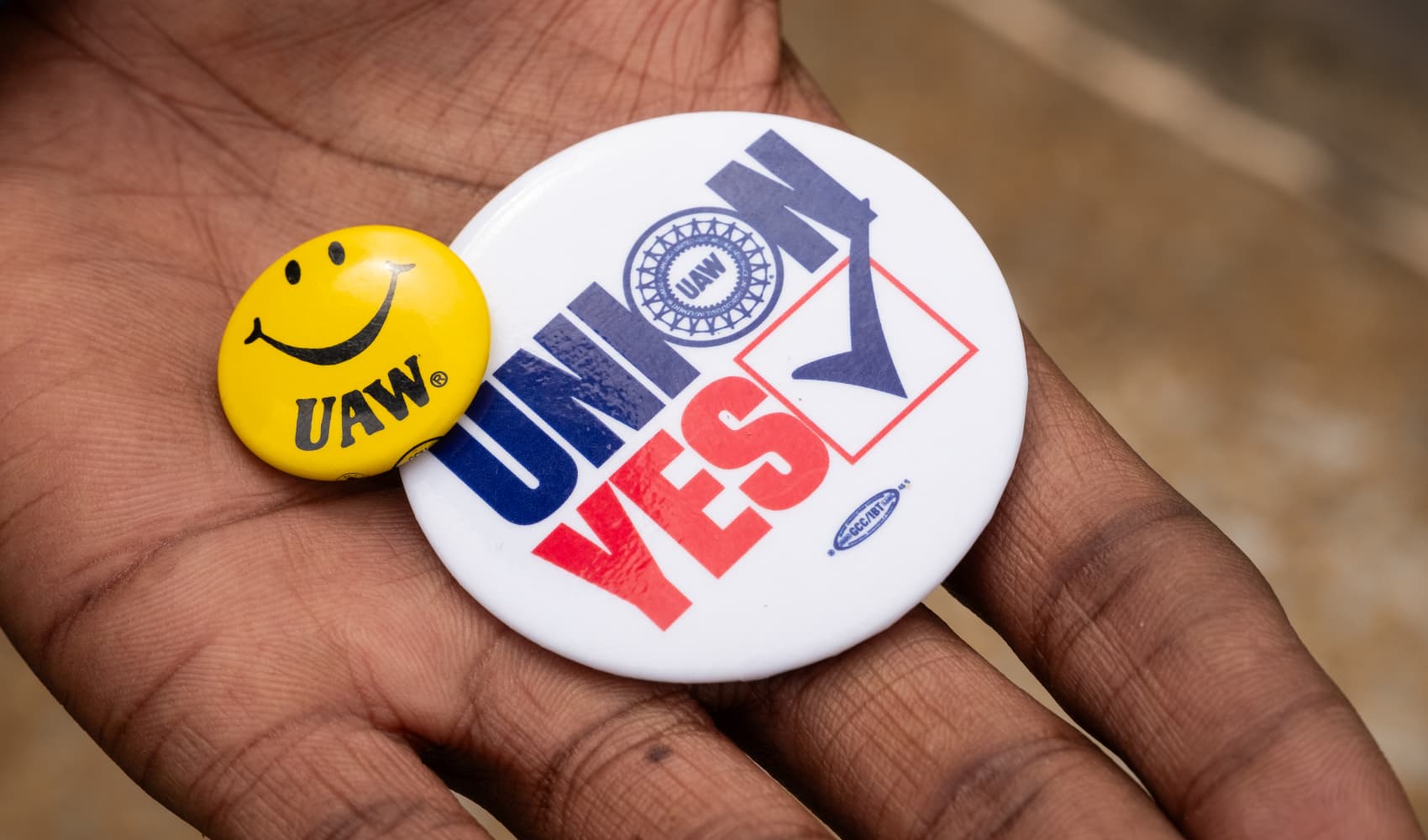
Want to be a pro at spotting liars? Pay close attention to their body language.
Whether in your personal or professional life, your success depends on your ability to protect yourself again deception. Knowing how to decipher truth from lies helps you make better deals, find the right partners and land the right hires.
As a behavioral scientist and body language expert, I study and teach people how to read verbal and physical cues. Here's how to know if you're dealing with a dishonest person:
Step 1: Determine their baseline
Get Boston local news, weather forecasts, lifestyle and entertainment stories to your inbox. Sign up for NBC Boston’s newsletters.
A person's baseline is how they act when they are under normal, non-threatening conditions.
You can establish baselines by sitting down with the person you want to read better — your child, spouse, friend, co-worker, boss — and talking casually to them about neutral topics that they would have no reason to lie about, such as the weather or what they want to have for dinner.
Take note of how they act, hold their body, sound and their facial movements. Once you have an understanding of their cues, you can pay particular attention to when and in which emotional states they tend to use those gestures.
Money Report
If you do see sudden differences in someone's baseline, it might be a sign that they're hiding something from you.
Step 2: Look for red flags
There is no universal cue that is a guaranteed indicator of lying, and any major shift from a person's baseline may indicate they are being dishonest.
However, there are special cues that liars often use. The most common ones I always look for include:
- Lip pursing: People sometimes press their lips together when they are trying to withhold information. This is a red flag that should make you pause and dig deeper by asking, "All good?" or "Anything else I should know?"
- Question inflections: When a person ends their sentences on a high note as if they're asking a question, it shows that they're not so confident about what they're saying — which should give you reason to doubt them. Liars often accidentally do this because they're subconsciously asking, "Do you believe me?"
- Lack of contractions: When someone is accused of lying, they may be quick to deny allegations by using contractions — or shortened versions of words. For example, "I didn't!" or "I don't know anything!"
- Lack of personal pronouns: Liars know that getting caught can get them into trouble, so they drop personal pronouns. This is especially apparent in writing. They might email you and say, "Can't make that deadline. Lots of issues with suppliers." Notice the clear avoidance of "I." Now compare that to this response: "I won't be able to get this to you by tomorrow. I've had issues with suppliers."
- Sudden distancing: If a person suddenly leans or physically takes a step back, they may be distancing themselves because they are uncomfortable lying.
- Fear microexpressions: Microexpressions are brief, involuntary facial expressions that give away a person's true emotions. Liars are often afraid of being caught, so they may express fear through small movements, like raising their eyebrows or wrinkling their forehead.

Remember, these signs are only red flags if they differ from someone's baseline. For example, if your boss typically makes a habit of using question inflections, that would not be considered a red flag for them.
Step 3: Find a cluster of three
It's important to never take a single red flag as a sure sign of lying. Most liars leak more than one lying cue in a matter of minutes or even seconds. This is called a cluster.
To more accurately decipher if someone is lying, look for a cluster of three red flags.
For example, a colleague is asked about the status of the new client. She responds by flashing a fear microexpression and saying, "I did not go to the bar?" — with a question inflection.
Or a manager asks an employee about this month's quota. The employee purses his lips, takes a step back and gives a reply with no personal pronouns: "Doing good! On track to meet it this month."
I believe it's better to always assume truth from people. A way to protect yourself against liars is to merely take note of the baselines of the most important people you engage with: How do they act, sound and behave when telling the truth?
Any red flags or deviations from this behavior can be an early sign that a topic needs further investigation.
Vanessa Van Edwards is the author of "Cues: Master the Secret Language of Charismatic Communication." She is the head researcher at the human behavior research lab Science of People, where she leads corporate workshops on science-based soft skills. Follow her on Twitter @vvanedwards.
Don't miss:
- Want to sound more confident? Avoid these 11 words and phrases that make you look 'weak,' say grammar experts
- People who are good at small talk always avoid these 7 mistakes, says public speaking expert
- Want to sound smarter? Avoid these phrases that make you sound 'pretentious,' say grammar experts
Sign up now: Get smarter about your money and career with our weekly newsletter






